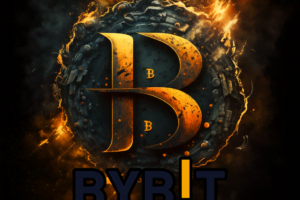Decentralized Finance (DeFi) has emerged as a revolutionary force in the world of finance, driven by the principles of Web3 and leveraging blockchain technology to create an open, transparent, and permissionless financial ecosystem. By eliminating the need for traditional intermediaries, DeFi democratizes access to financial services and offers new opportunities for individuals to manage and grow their wealth. In this article, we will explore the key components of the DeFi revolution, from its core building blocks and services to emerging trends and challenges.
Core Building Blocks of DeFi
The DeFi ecosystem is built on several core components that enable its decentralized nature and functionality. These building blocks include:
- Blockchain: DeFi relies on blockchain technology, primarily the Ethereum network, to facilitate secure and transparent transactions through the use of smart contracts.
- Smart Contracts: These self-executing agreements automatically execute predefined actions when specific conditions are met, eliminating the need for intermediaries and reducing the risk of human error or manipulation.
- Decentralized Applications (dApps): DeFi services are typically delivered through dApps, which are open-source applications that run on blockchain networks and interact with smart contracts.
- Cryptocurrencies and Tokens: DeFi transactions are facilitated using cryptocurrencies and tokens, such as Ether (ETH) and various other ERC-20 tokens.
Key DeFi Services
DeFi offers a wide range of financial services that cater to various user needs. Some of the most popular DeFi services include:
- Decentralized Exchanges (DEXs): Unlike traditional, centralized exchanges, DEXs enable peer-to-peer trading of cryptocurrencies and tokens without the need for a central authority. Examples of popular DEXs include Uniswap and SushiSwap.
- Lending and Borrowing Platforms: DeFi lending platforms, such as Aave and Compound, allow users to lend and borrow cryptocurrencies without intermediaries, often providing more competitive interest rates than traditional financial institutions.
- Stablecoins: Pegged to stable assets like fiat currencies or commodities, stablecoins aim to minimize price volatility and facilitate secure, low-cost transactions within the DeFi ecosystem. Examples include USD Coin (USDC) and DAI.
- Yield Farming and Liquidity Mining: Users can earn passive income by providing liquidity to DeFi protocols or participating in yield farming strategies, which involve staking tokens or providing liquidity to pools in exchange for rewards.
- Decentralized Insurance: DeFi insurance platforms, such as Nexus Mutual and Cover Protocol, provide decentralized alternatives to traditional insurance, offering protection against smart contract risks and other potential vulnerabilities.
Emerging Trends and Challenges in DeFi
As the DeFi landscape continues to evolve, several emerging trends and challenges have surfaced:
- Layer 2 Solutions and Scalability: With the increasing demand for DeFi services, blockchain networks face congestion and high transaction fees. Layer 2 solutions, such as Optimism and zkRollups, aim to address these issues and improve scalability.
- Interoperability: As the DeFi ecosystem expands, there is a growing need for cross-chain interoperability to facilitate seamless interaction between different blockchain networks and DeFi protocols.
- Regulatory Compliance: DeFi’s decentralized nature poses challenges for regulatory compliance, with governments and regulators seeking ways to ensure consumer protection and prevent illegal activities without stifling innovation.
Conclusion
The Decentralized Finance (DeFi) revolution is fundamentally transforming financial services by leveraging Web3 technologies to provide open, transparent, and accessible financial solutions. As DeFi continues to grow and mature, it holds the potential to empower individuals and reshape the global financial landscape, paving the way for a more inclusive and decentralized financial future.
























![StarsArena (StarShares): The Universe of Web3 Crypto Social Media! [Guide] starsarena](https://cryptos.us/wp-content/uploads/2023/10/starsarena.png)